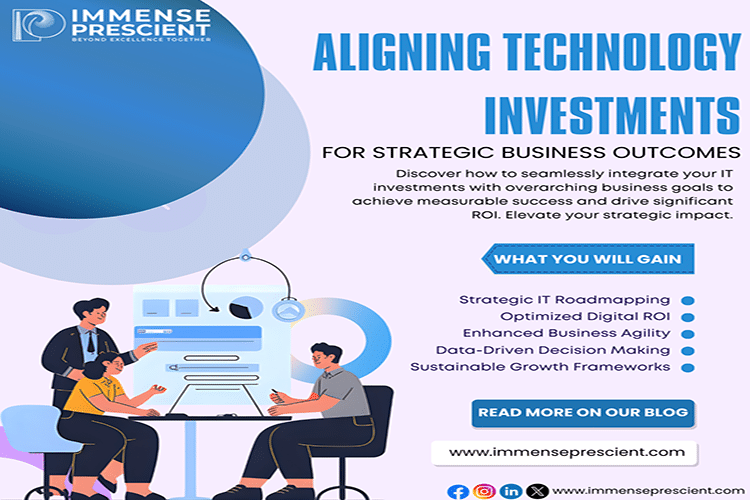How to Align Technology Investments with Business Outcomes
Introduction – Align Technology Investments with Business Outcomes
Technology is no longer a back-office function. For today’s enterprises, every IT investment must deliver tangible business value. CIOs and IT leaders are under pressure to ensure that every dollar spent translates into growth, efficiency, or competitive advantage. The challenge: how to align technology investments with business outcomes in a way that drives lasting impact?
Why Alignment Matters
Misaligned IT spending can be like putting premium fuel in a car with no destination it burns resources without moving the business forward. When technology investments are directly linked to measurable outcomes, organizations achieve:
- Improved ROI: Projects that support revenue growth or cost optimization.
- Faster Innovation: Technology initiatives that accelerate time-to-market.
- Business Resilience: Solutions that reduce risk and improve adaptability.
4 Strategies to Align Technology with Business Goals
1. Start with Business Objectives, Not Tools
Too often, organizations chase the latest technology trends without asking: What problem does this solve? Leaders must begin with core business objectives whether it’s expanding into new markets, improving customer experience, or optimizing supply chains and then map the right technology to support those goals.
2. Build a Business Case for Every IT Investment
Every technology purchase should come with a business case that highlights expected outcomes. For example, a cloud migration should not be justified by “modernization” alone, but by how it reduces costs, enables faster deployments, or improves customer-facing applications.
3. Foster IT-Business Collaboration
Alignment is not the CIO’s responsibility alone. Business unit leaders, finance, and IT must work together in defining priorities and success metrics. Cross-functional steering committees are one proven way to ensure technology initiatives are rooted in enterprise strategy.
4. Measure Outcomes, Not Outputs
The true measure of IT success is not in systems delivered, but in outcomes achieved. Instead of reporting the number of applications deployed, focus on metrics like revenue growth, reduced downtime, customer satisfaction scores, or faster order fulfilment.
Practical Example:
A retail chain investing in AI-driven demand forecasting doesn’t just “adopt AI.” The business outcome is fewer stockouts, optimized inventory, and higher sales margins. This outcome-driven framing secures executive buy-in and ensures IT budgets are seen as investments not costs.
Conclusion
Aligning technology investments with business outcomes transforms IT from a cost center into a growth engine. By starting with clear objectives, building strong business cases, collaborating across functions, and measuring outcomes, organizations can ensure every technology dollar contributes to strategic advantage.




